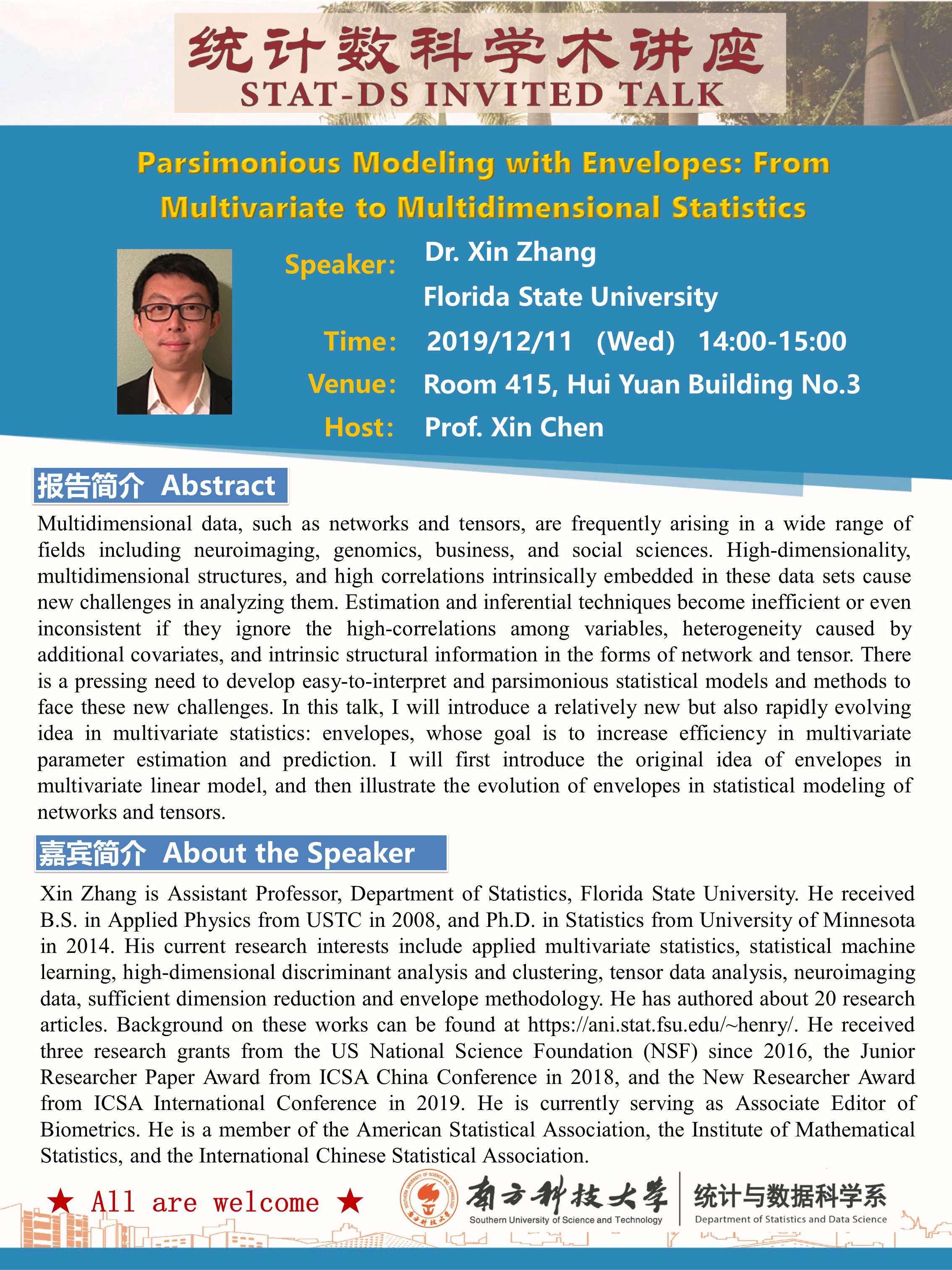Abstract
Multidimensional data, such as networks and tensors, are frequently arising in a wide range of fields including neuroimaging, genomics, business, and social sciences. High-dimensionality, multidimensional structures, and high correlations intrinsically embedded in these data sets cause new challenges in analyzing them. Estimation and inferential techniques become inefficient or even inconsistent if they ignore the high-correlations among variables, heterogeneity caused by additional covariates, and intrinsic structural information in the forms of network and tensor. There is a pressing need to develop easy-to-interpret and parsimonious statistical models and methods to face these new challenges. In this talk, I will introduce a relatively new but also rapidly evolving idea in multivariate statistics: envelopes, whose goal is to increase efficiency in multivariate parameter estimation and prediction. I will first introduce the original idea of envelopes in multivariate linear model, and then illustrate the evolution of envelopes in statistical modeling of networks and tensors.
About the Speaker
Xin Zhang is Assistant Professor, Department of Statistics, Florida State University. He received B.S. in Applied Physics from USTC in 2008, and Ph.D. in Statistics from University of Minnesota in 2014. His current research interests include applied multivariate statistics, statistical machine learning, high-dimensional discriminant analysis and clustering, tensor data analysis, neuroimaging data, sufficient dimension reduction and envelope methodology. He has authored about 20 research articles. Background on these works can be found at https://ani.stat.fsu.edu/~henry/. He received three research grants from the US National Science Foundation (NSF) since 2016, the Junior Researcher Paper Award from ICSA China Conference in 2018, and the New Researcher Award from ICSA International Conference in 2019. He is currently serving as Associate Editor of Biometrics. He is a member of the American Statistical Association, the Institute of Mathematical Statistics, and the International Chinese Statistical Association.
Poster




